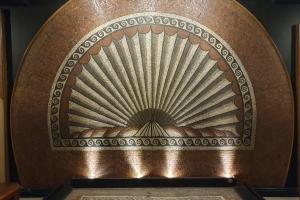Reviews
In a little under 150 beautifully illustrated pages, Sally Coulthard takes the reader on a whistle-stop tour of 50 of the most common, and important, flowers from around the world. Combining ancient medicinal uses with Victorian flower symbolism and…
In Understanding Nazi Ideology, Carl Müller Frøland sets out to do just that: to get to the bottom of an ideology that is often considered confused, chaotic, and contradictory. In doing so, Frøland aims to answer some of the most important, but…
Cat Jarman’s River Kings takes a refreshing new look at the Viking Age, focusing on the important, but often overlooked, Scandinavian expansion eastwards. Her inspiration comes from a seemingly insignificant orange-red carnelian bead found in Repton…
The Hitler Years: Disaster, 1940-1945 is the eagerly awaited second volume in Frank McDonough’s new and extensive history of the Third Reich. Immediately following on from The Hitler Years: Triumph, this new volume charts the final peak of Nazi…
What’s truly joyful about 'A Short History of the World According to Sheep' is how Coulthard has woven together so many different disciplines – history, literature, archaeology, etymology, genetics, current affairs and politics, earth…
In the space of just forty years, the small and troubled kingdom of Macedonia went from an inconsequential backwater on the northern edge of Greece to a superpower that had challenged, and beaten, the greatest empires of the known world. In large…
The World Aflame is the eagerly anticipated follow-up to The Colour of Time, a worldwide bestseller that changed perceptions of the past through the careful colourization of black-and-white photographs. Marina Amaral’s pictures and Dan Jones’s text…
The National Museum of Computing, situated within the Bletchley Park complex, is heaven for geeks and computer enthusiasts. Charting the development of computing from the first Turing-Welchman Bombe machine (used to break Enigma messages) to modern…
The Verulamium Museum, named after the Roman town around what is now St Albans, is perfectly placed to tell the story of life before and during the Roman occupation.
The first volume of 'The Hitler Years' is not just another popular history of the Third Reich: it is a masterclass in the history of Nazi Germany, with an internationally renowned expert as the teacher. As such, it is essential reading for…
Subscribe to Reviews











